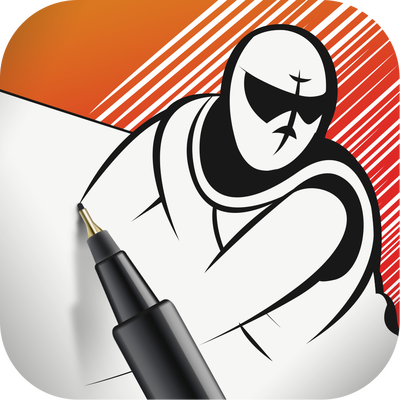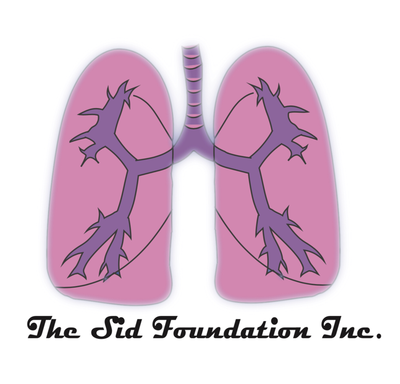
Kalani Caraballo
"I’M SHOWING PEOPLE THAT THROUGH MY DETERMINATION AND HARD WORK THINGS CAN HAPPEN. I’M HAPPY TO BE ABLE TO INSPIRE, LIKE OTHERS HAVE INSPIRED ME." @DummieComicsInc @K.Caraballo www.Gumroad.com/DummieComicsInc Bio: Kalani Caraballo is a writer based out of Kearny, New Jersey. He has been producing and writing comic books since early 2016. Titles such as Home, Manifesto, Pistol Grip, and the newly released title Messenger. Along with his Editor/Fiancee Chrissy Torres, they operate their own publishing company Dummie Comics Inc. Where are your from? I was born in Honolulu, Hawaii. Both my parents are from the greatest island on Earth, Puerto Rico. My family left Hawaii for Newark, New Jersey when I was three years old. My Dad and Mom divorced when I was four, and my Mom moved my brother and I to Kearny, New Jersey where I still currently reside. Where did you grow up? My beginning years I started out in Hawaii, Newark, and my formative years I was in Kearny. How did your experiences affect your writing? In general, my life is in my writing. Through my writing you can see my vision and sometimes my opinion on certain things. I know my experiences definitely helped me write Home. At the same time some of my father’s experiences made it into Manifesto. So nothing is spared honestly. I’m growing in life through my writing. You and your partner run your own publishing company Dummie Comics Inc. What inspired you to start your own business? I have to say it started with the idea of just wanting to write and publish a comic. Originally the idea was just to do one. My first comic I wrote was this Hip Hop, Alien story, titled Last of a Dying Breed. After commissioning an artist to illustrate Last of a Dying Breed, I had started writing Home. I ended up losing interest in Last of a Dying Breed, and solely focused on Home. I completed the full series of Home in a span of two weeks. While I was finishing Home, the idea of Manifesto came to me. After completing Home, I immediately started writing Manifesto. I realized I had two comic series on my hand. At that moment it became about Dummie Comics the brand, not me. The mission for Dummie Comics Inc to inspire others to do things that other people might have told them that they could not ever accomplish. Please share why you feel this is an important mission and how your comics fulfill this mission. When I originally told people about me wanting to get into the comic business everyone I knew laughed at me. They said things like, “You can’t draw”, “How are you going to compete with characters that have a 75 year legacy?”, we heard it all. I want to inspire people to give themselves a chance. I knew if I didn’t trust my gut feeling, and listened to those people, I wouldn’t be where I’m at today. Everyday I wake up, and push this brand as hard as I can, and the results show. This isn’t a little comic thing or a hobby. Slowly but surely things are happening. I’m showing people that through my determination and hard work things can happen. I’m happy to be able to inspire, like others have inspired me. Keep going! And only listen to yourself. What type of stories do you like to make comics about? To be honest it depends on my mood when I pick up the pen to write. It also depends on the character I am writing for at that moment. I tend to enjoy writing stuff with a lot of grittiness to it. What’s your process? Elaborate on how you work through your projects. How do you break up your time for your projects at different stages? My process is simple. Usually when I come up with an idea for a comic I like to know how I’m going to end it, so I usually write the ending first. From there everything comes naturally. I’ll envision the entire story, and flesh out what I want to see on each page. Then I’ll begin my dialogue. Once I complete the script, and we green light the script to be illustrated, I’ll go through the entire script one more time, and make any corrections, then I’ll send it to my Editor and partner Chrissy Torres. She’ll make her corrections, and then send it back to me for my approval. Once completed, we send it to our illustrator Frank Castro, and then play the waiting game. While an issue is being illustrated, I’ll start working on another script. Sometimes for the same character, other times for another. It’s all about balance, and lucky for me, each of our characters have different universes, so there’s never a loss of creativity, because they’re all different. What do you recommend to aspiring writers/creators that you wish you had known much earlier? What would you tell yourself 20 years ago? Have fun. Remember you’re creating a comic book. It’s a source of entertainment. Your imagination will take you as far as you let it. Just keep creating, and don’t stop. 20 years ago I was 11 years old, I would probably tell myself not to worry so much, and to have fun. As long as you have your imagination you’ll be alright, and nobody can take that away from you. What do you love best about making comics? My favorite part about making comics, is being able to express myself, and seeing my vision come to life. But also, its the reaction we get from our readers. Being able to see people react to something you saw in your head is always a good thing, whether positive or negative. Every time we’re about to release a new issue it’s an exciting time. Sometimes the feeling of seeing the finished product can be better than sex. What do you wish was different about the comics industry? I wish consumers/retailers were more open minded, and that people got out of their comfort zones and to give more things a chance. I know a lot of consumers and shops that won’t buy anything that doesn’t bare a DC or Marvel logo. I'll tell you right now, some of the best comics in the world aren’t even produced by those two. People don’t know what they’re missing out on. Which books do you recommend artists should have in their reference library? Favorite instructional material? To be honest, I’ve never picked up anything as instructional material. When I began writing, I kind of just dove in head first, and hoped for the best. I believe I looked up a few articles on writing comic scripts on Google, mainly they all said, “Comic book scripts are instructional manuals for what the artist is going to draw on the page”. Once I heard that it was go time. The best references to me are comic books themselves. You have to be a fan of the medium to know what you want to see out of your comics, and what you don’t want to see in your comic books. My teachers were Stan Lee, Jack Kirby, Kevin Eastman, etc. I mean how could I fail going to the college of those guys? Top 5 Favorite Artists? In no order: Frank Castro (Artist of Home and Manifesto) Jack Kirby Rob Liefeld George Perez Frank Miller Honorable mentions: Michel Fiffe Kevin Eastman Top Favorite Comic characters? In no order: Foolkiller White Tiger Hardware Teenage Mutant Ninja Turtles Guardians of The Galaxy (Early team) Spider-Man Gambit Youngblood Spawn NFL Super Pro X-Force Fantastic Four Copra
Top 5 Favorite comics, graphic novels? Frank Miller’s Daredevil run Jim Valentino’s Guardians of the Galaxy run Stan Lee & Jack Kirby’s run on Fantastic Four Secret Wars Volume 1 Steve Gerber’s Foolkiller run Michel Fiffe’s Copra Teenage Mutant Ninja Turtles Dwayne McDuffie’s Hardware What type of work are you interested in doing? Now? In the future? Right now I’m really excited about everything Dummie Comics Inc. In 2019, I’m looking to finally completing all issues of Home and Manifesto. Manifesto #3 is on the way, and Home #3 should be completed shortly there after. As far as the future, I’m looking forward to introducing two new series. I consider these to be my dream projects, and ultimately, my best work. I can’t wait to see these projects come to life. How can others find/ purchase your work? Website, social media link, etc You can follow Dummie Comics on these social networks: Facebook.com/DummieComicsInc Instagram: @DummieComicsInc @K.Caraballo Our work can be purchased on www.Gumroad.com/DummieComicsInc Works available from Dummie Comics Inc
1 Comment
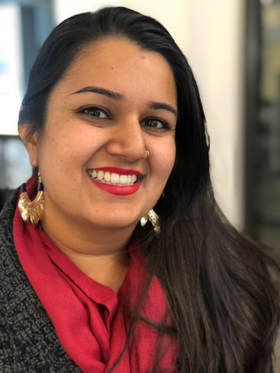
Ananya Vahal
"My mission as a writer is to empower people of color to write their own stories." @ananyavahal www.ananyavahal.com Bio I’m Ananya Vahal and I’m an Indian-American writer. I'm also the President of The Sid Foundation Inc., the writer/creator of Lung Girl Comics, and writer/content editor here at Prime Vice Studios. I have an MFA in Writing. My genres include creative nonfiction, digital content creation, and comics. I like reading and writing funny stuff. Where are your from? I was born in New Delhi, India. I grew up all around the world and have been living in the Atlanta area for over 15 years. Where did you grow up? I grew up in New Delhi, India, Dubai, U.A.E., Charlotte, NC, and Kennesaw, GA. How did your experiences affect your writing? The purpose of my writing is to tell the stories that have been historically ignored or suppressed in our country. My purpose came about because of my experience growing up in a country where the only signs of existence of my culture were a funny accent and a smelly bowl of curry. I didn’t know any writers that looked like me growing up and no one was telling the stories of my family. I want little brown girls today to be able to see themselves in books, movies, and all forms of media because it was denied to me. You’ve created an original intellectual property: Lung Girl. How did this character & story come about? Lung Girl came about because of a necessity on many levels. In 2014, my brother Sid died due to complications from his double lung transplant. My parents and I wanted to start a charity in his name to help other people going through the same situation. We establishedThe Sid Foundation in 2015 to raise funds and awareness for lung transplant research and assist lung transplant patients with funding and resources. I always knew The Sid Foundation would have a heavy art aspect to it because Sid was an artist and an avid comic book reader. I also found that lung transplant was a complex and often gruesome topic to talk about with people in the community. The best way to tackle this issue was to create a comic book character who could represent the nonprofit and help us tell our story. Therefore, Lung Girl was born. Lung Girl is a twelve-year-old Indian superhero who fights bad guys and lung health issues in her city. She has super lung powers which give her super strength and allow her to fight. She makes the perfect mascot for The Sid Foundation and helps us attract an audience that we normally would have missed. Available for purchase now. Click on pics.You have published two Lung Girl comics. How was that experience? The Lung Girl comics are published annually through The Sid Foundation. It has been an interesting experience. First, I had to raise funds for the project. Then, I learned how to write comic book scripts. I have an MFA in writing, but they don’t teach you how to write comic book scripts in a writing program, so I had to learn the process of turning my story into panels and pages. Finally, I hired a sequential artist to illustrate it. That process took a couple of months. I have been working in-house with Prime Vice Studios since the second issue published in 2017. Once the comic book was fully illustrated, I sent it to the print shop. I also uploaded it on Amazon for a digital version. Also, before I got them printed or turned into a digital comic, I had to purchase an ISBN number for them and get a copyright on them, so they could be protected. It’s a process that takes time, effort, and constant learning which is why we only produce one comic a year for the time being. Once I have more staff and more funding, we plan to publish more comics annually. You have recently graduated with your MFA in Writing. What drove you to pursue a Masters degree? I graduated with my MFA in writing from SCAD in June 2018. I have been writing since I was nine years old. I picked up writing as soon as my family moved to the United States. It was my way of making sense of my new life in a completely new country. I wrote journal entries, poems, and songs until I was in high school. However, since I didn’t know any writers in real life, especially ones that looked like me, I didn’t know that it was a profession I could pursue. For some reason, I couldn’t stay away from writing. Once I got to college, I tried several different majors before settling into English with a minor in Spanish. I graduated from the University of Georgia in 2010 with my bachelor’s degree. Even with an English degree, I didn’t know what I should do as a profession. The only options I was exposed to were Law School or Journalism and I didn’t find myself drawn to either one. I decided to take a break after graduating to figure things out and during that time I took the GRE and the LSAT so I could keep my options open for grad school. During my break year, my life took a complete turn when my brother became ill and was hospitalized. I spent almost a year in the hospital with my brother as he fought for his life and received a double lung transplant. After that, I became interested in the health care industry, specifically, physical therapy. So I changed my course and began pursuing physical therapy. After about two and a half years of working in physical therapy and applying to schools, we got a call that my brother was hospitalized again. This time he didn’t survive. After my brother’s death, I once again evaluated my course in life and after making peace with the fact that I was not getting into physical therapy school, I decided to go back to my original calling, writing. I definitely took the long and winding road. I had a lot of life experience under my belt to write about. I began researching the writing programs at several universities. Once I was introduced to SCAD, I decided that was the program for me. Their program focused on digital media and creative nonfiction. I learned ways to write my story effectively and share it with the world digitally. What type of stories do you like to write about? My mission as a writer is to empower people of color to write their own stories. Today, there are more stories published about people of color than by people of color. This means that we are being written about in ways that we do not control. We are being written about from the White perspective which often includes stereotypes and oppressive narratives. We need to control our own narrative. I think words are the most powerful tool against oppression. So, to make a long answer short, I write my stories. Stories that are highly underrepresented in the literary world and in today’s media. Stories about what it’s like to be a South Asian immigrant growing up and living in the United States. Stories about my family and my culture. #browngirlwrites #ownyournarrative Top 5 favorite writers. Roxanne Gay, Scaachi Koul, Issa Rae, Lilly Singh, and Sherman Alexie Favorite comic characters. Obviously, I love the new Ms. Marvel (representing the Desis), Black Panther (duh), Batman (he’s always been my favorite superhero), and Lung Girl! (yup, that’s a plug). Top 5 favorite comics & graphic novels. The new Ms. Marvel series, Bitch Planet by Kelly Sue DeConnick, Avatar: The Last Airbender series, Tales for La Vida: A Latinx Comics Anthology, and Saint Love City Funk: Boogie Down Blues.
Saint Love City Funk: Boogie Down Blues
What type of work are you interested in doing? Now? In the future? I am already doing the type of work I want to do which is write, build community, and educate. I hope to continue doing this work at a larger scale in the future. How can others find or purchase your work? Website, social media link, etc. You can find my work, my services, and my #browngirlwrites blog on www.ananyavahal.com. Twitter and Instagram: @ananyavahal Facebook: Ananya Vahal Medium: Ananya Vahal Works Available by Ananya Vahal
Shawn Martinbrough
“Stepping outside of one’s regular environment, interacting with new and different people and experiencing life to its fullest are the best fuel for creativity. " “Stealing or directly swiping someone else’s work is a No-No. It’s the ultimate corny move." @smartinbrough www.shawnmartinbrough.com Bio Shawn Martinbrough is the author of “How to Draw Noir Comics: The Art and Technique of Visual Storytelling.”, published by Random House and reprinted in several languages. He is a critically acclaimed creator/artist whose DC Comics, Marvel and Dark Horse Comics projects include “Batman: Detective Comics”, “Luke Cage Noir”, “Captain America”, “The Black Panther” and “Hellboy”. He is the artist of “Thief of Thieves”, published by Skybound/Image Comics. Shawn has co-created characters featured in the film, “Deadpool”, the animated “Batman: Gotham Knights”, the FOX television series “GOTHAM”, “The GIFTED” and the “JUSTICE LEAGUE” feature film. Shawn’s work has been covered by Vanity Fair, USA Today, BBC World America, The New York Times, ABC News, NBC News, The Washington Post, NPR, The Hollywood Reporter, Entertainment Weekly, BET, Essence, Ebony, The New York Daily News, AOL, Publisher’s Weekly, SiriusXM and others. Shawn has been a featured guest and panelist at comic conventions in San Diego, New York, Washington, D.C., the UK, Paris, São Paulo and Rome. As an artist, Shawn has given lectures on his career at Walt Disney Animation, Lockheed Martin, The Pentagon, TEDx Mid Atlantic, The Society of Illustrators, the School of Visual Arts, Fiorello H. LaGuardia High School of Music & Art and Performing Arts, The University of Michigan, The Savannah College of Art and Design, The 100 Black Men of America Conferences and the Book Expo of America. Inspired by Shawn’s TEDx Talk, which explored storytelling and themes of inclusion, The George Lucas Foundation consulted with Shawn to develop the Lucas Museum of Narrative Art Summer Studio. Co-hosted by the Boys and Girls Club in South Central Los Angeles, Shawn worked with a team of artists and educators to provide an intensive two week workshop culminating with each student creating their own mini comic book. Shawn is a Native New Yorker and an alum of both the Fiorello H. LaGuardia High School of Music & Art/Performing Arts and The School of Visual Arts. Being born and growing up in the Bronx. How did your experiences affect your art? During my junior high school years, I learned to paint while taking a class at my local community center in Co-op City. My teacher, Emilio, introduced me to acrylics and color theory. My formal art education began after I was accepted as an art major to the Fiorello H. LaGuardia High School of Music and Arts. In addition to being immersed in drawing and painting classes, I was interacting with a diverse school of kids from all walks of life across all the five boroughs of New York. The amount of creative and social stimuli I experienced during those years was incredible. In your How to book (How to Draw Noir Comics: The Art and Technique of Visual Storytelling) you share several exercises for artists to practice such as taking B & W pictures to develop composition skills, and drawing faces and objects with dramatic lighting. Are there any other best practices you wish to share that weren’t included in the book or that you developed after its publishing? Drawing from life is an exercise that I cannot stress enough. I regularly use photo reference for my work since I wasn’t blessed with a photographic memory to remember all of the unique details of a subject. I still use all of the techniques that I describe in my art instruction book, “How to Draw Noir Comics: The Art and Technique of Visual Storytelling”. I’m always looking to discover and be inspired by artists from across the spectrum so I love visiting museums, galleries, pop up exhibitions, street fairs, etc. Stepping outside of one’s regular environment, interacting with new and different people and experiencing life to its fullest are the best fuel for creativity. Any worst practices that artists should avoid at all costs? Copying other artists directly. We all have our favorite artists but when starting out, you have to realize that the artist whose style you admire, is usually influenced by an artist that they admire. So basically, you’re copying a copy of a copy. Stealing or directly swiping someone else’s work is a No-No. It’s the ultimate corny move. Who do you feel should/shouldn’t pursue a career in comics? If you don’t have the patience or dedication to build a career as an artist, this profession probably isn’t for you. Then again, you can apply this principle to any profession. I believe that being an artist is akin to being an athlete. You must practice every day to get better and at the same time, you must learn how to market yourself as a small business. That last part is something art schools don’t teach you. What do you recommend to aspiring artists that you wish you had known much earlier? What would you of told yourself 20 years ago? I would have told my younger self, “Make sure to create various employment options for yourself by diversifying the number of companies that you work with sooner in your career. Never get comfortable working for only one company unless, you’re the owner of that company.” What do you love best about making comics? I love the process and the art of telling stories. Solving the artistic challenge of visualizing what the writer has written on the page can be very satisfying, for the most part. Sometimes, as the artist, you never quite solve the problem to your satisfaction. You simply run out of time. Having worked with some of the best writers in the industry over the course of my career has inspired me to write my own stories. Actually, I’ve always written stories of my own. It’s been very advantageous to work alongside really talented writers and absorb some of their approaches to plotting and scripting. You had your start working with Milestone Comics. That was an incredible ensemble of artists & writers that produced remarkable content but struggled with sales and distribution plus the loss of Dwayne McDuffie. How was your experience working for Milestone? I fell into working for Milestone actually. I knew Michael Davis, one of the original founders. Years prior, Davis had introduced me and other students from his cartooning class at the Children's Art Carnival in Harlem to many professional artists working in the comic industry like Denys Cowan, Walt Simonson and Bill Sienkiewicz. Later, when Milestone was founded, I was already working as a freelance artist for Marvel. At that time, the Marvel offices were located on Park Avenue, a ten minute walk from Milestone. When I was done dropping off artwork at Marvel, I would swing by and hang out at the Milestone offices. One day, they asked if I would be interested in inking a new penciller named John Paul Leon on “Static”, one of their flagship titles. John’s art was amazing so I said sure. Over the next number of years, John and I worked together on various projects including, “Static” and “The Shadow Cabinet” for Milestone, “The Further Adventures of Cyclops and Phoenix” and “Logan” for Marvel and “The Challengers of the Unknown” for DC Comics. Working at Milestone was a really fun and empowering time in my career. A great and talented group of people. What do you wish was different about the comics industry? More diversity on the editorial side would be great. Editors are the gatekeepers for which projects get considered and which writers and artists get hired so it would be nice to have folks who are organically receptive to different voices and experiences than their own. It would be smart business as well. I also wish there would be stronger synergy between the publishers and the studios when it comes to promoting comic book sales. For example, it makes no sense that Black Panther movie made a billion dollars worldwide but the average Black Panther comic sells under 50k. This is a missed opportunity that applies to most comic book properties that are adapted to film and television. Which books do you recommend artists should have in their reference library? Favorite instructional material? This is a tough question because there are so many. “The Alex Toth: Genius Animated & Illustrated” collections are amazing. “DC: The New Frontier” by Darwyn Cooke, “Elektra: Assassin” by Frank Miller & Bill Sienkiewicz, The Fantastic Four” Omnibus by John Byrne, The “Nexus” collection by Mike Baron & Steve Rude… Top 5 favorite artists. There are too many artists that I admire and am inspired by so I can’t narrow them down to a top five. To name a few in comics, Alex Toth, Jack Kirby, David Mazzuchelli, John Byrne, George Perez, Walt Simonson, Frank Miller, Bill Sienkiewicz, Mike Mignola, Jose Luis Garcia Lopez, Tony Salmons, Steve Rude, Moebius, Jorge Zaffino, Eduardo Risso, Khary Randolph, Ron Wimberly… I could go on and on. Top 5 favorite comic characters. I haven’t had a favorite comic book character since high school. However, I find Doctor Strange, The Question, the cast of characters from “100 Bullets”, Iron Man, Doctor Doom, Galactus, Conrad Paulson and Celia (from “Thief of Thieves”) to be very compelling characters. Top 5 favorite comics and graphic novels. Again, I can’t narrow this list down to THE top five so I’ll mention some of my favorites that I feel don’t receive enough love,“Cosmic Odyssey” by Jim Starlin and Mike Mignola, “Nat Turner” by Kyle Baker, “Pride of Baghdad” by Brian K. Vaughan & Niko Henrichon, “Twilight” by Howard Chaykin & Jose Luis Garcia Lopez, “X-Men: God Loves, Man Kills” by Chris Claremont & Brent Eric Anderson. What type of work are you interested in doing in the future? More writing. Definitely some original creator owned projects that I will write and draw. I would love to return to directing. Years back, I took some time off from comics to write and direct a few short films that ended up running in several film festivals. Those were some of the most creatively fulfilling times in my life. Working with actors, scouting locations, etc. was such a creative rush. I also have interest from publishers and a few ideas for a follow up to “How to Draw Noir Comics”. I just need to nail them down. How can others find you or your work? www.shawnmartinbrough.com Instagram / Twitter : @smartinbrough Books by Shawn MartinbroughArt GalleryMedia featuring Shawn MartinbroughWe had the pleasure and privilege to participate in the annual Career Day held at the Marietta Center for Advanced Academics (MCAA). Ananya & I along with other parents set up a booth and shared insights about our careers. Students from third to fifth grade came by and asked us about our jobs and the nature of our career. The older students even dressed to impressed and brought their resumes and samples of their art to share. It was an impressive experience. The parents and other participants had their own presentations as well. Some were in their uniforms and were performing demonstrations of their specialties and were giving away goodies of the students to take with them. Prime Vice Studios #PVSketch Challenge We had stickers featuring our original characters and encouraged students to participate in our #PVSketch challenge. Many students were thrilled to show off their drawing talents: It was amazing to see the eagerness of the students. They genuinely had an avid interest in their futures, diverse interests and hobbies, and were open-minded to expanding their possibilities through the development of their natural talents. Some students had a love and passion for art writing and drawing. Speaking with Ananya and I broadened their horizons and infused them with a new confidence. The excitement in seeing them participate in our sketch challenge was precious.
It’s not common to see artists at this career day, but it was definitely popular! We hope to continue our work as arts integrators for educational purposes. I believe it is incredibly important to incorporate arts as a major component of education. It is an incredible outlet and platform for the development of critical thinking skills, problem solving skills, making individuals well rounded and better citizens. Thank you once again to the MCAA for hosting us. Peace, Carlos “Loso” Perez, MFA About Marietta Center for Advanced Academics (MCAA) MCAA is an amazing establishment:
Their mission is to provide students an advanced academic experience with an emphasis on science, technology, engineering, the arts, and mathematics (STEAM). The school honors this mission with the vision to be the leader in STEM education, preparing and inspiring 21st century students to meet the challenges of our global society through innovation, collaboration, critical and creative thinking. To learn more about The Marietta Center for Advanced Academics: https://www.marietta-city.org/Page/23 https://www.facebook.com/Marietta-Center-for-Advanced-Academics-1455391408098839/ |
Archives
November 2023
Categories
All
|


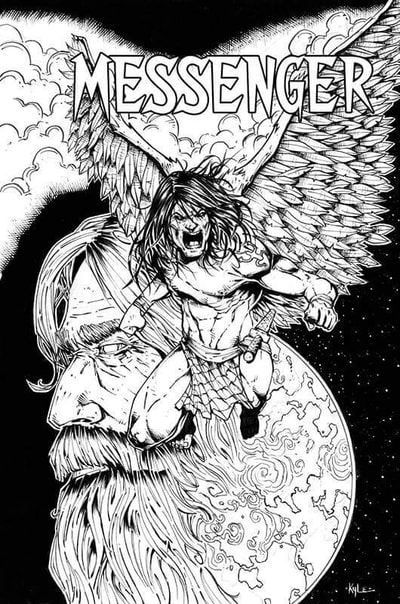
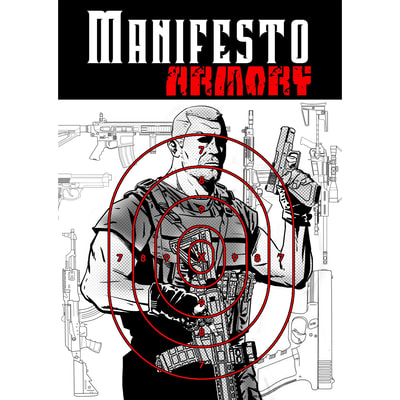
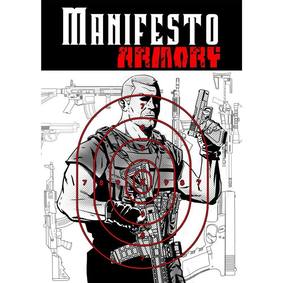













































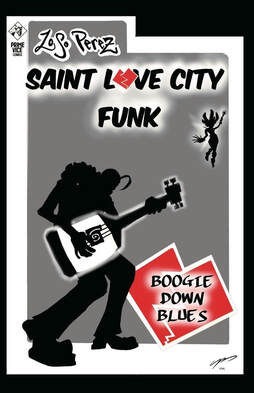






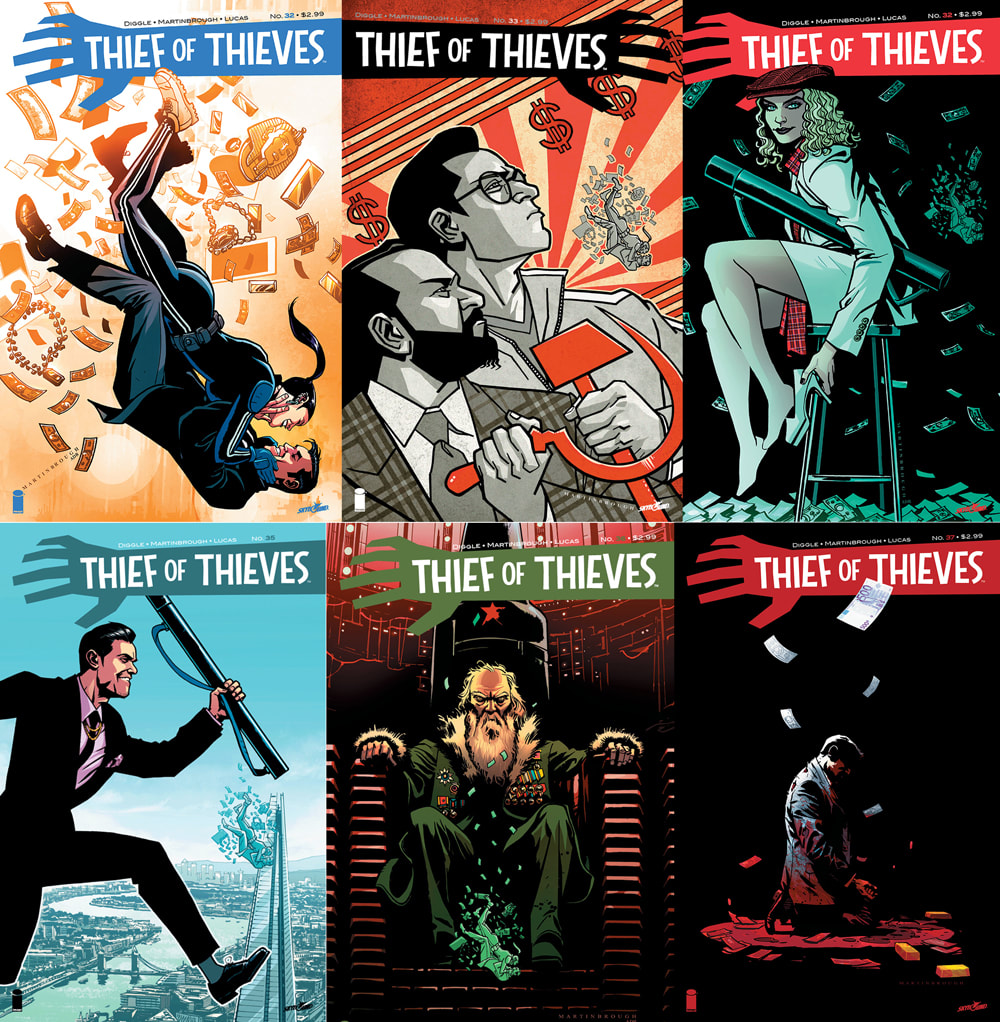









































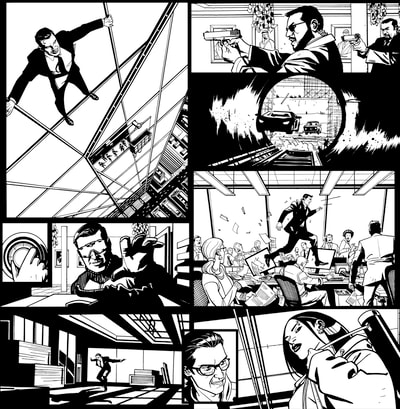
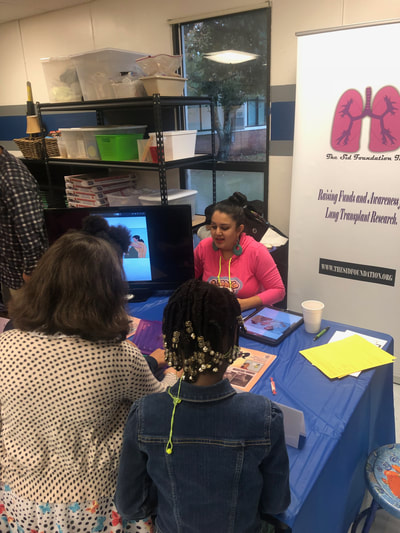
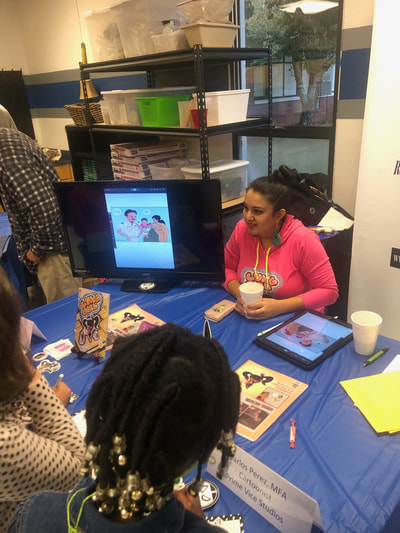


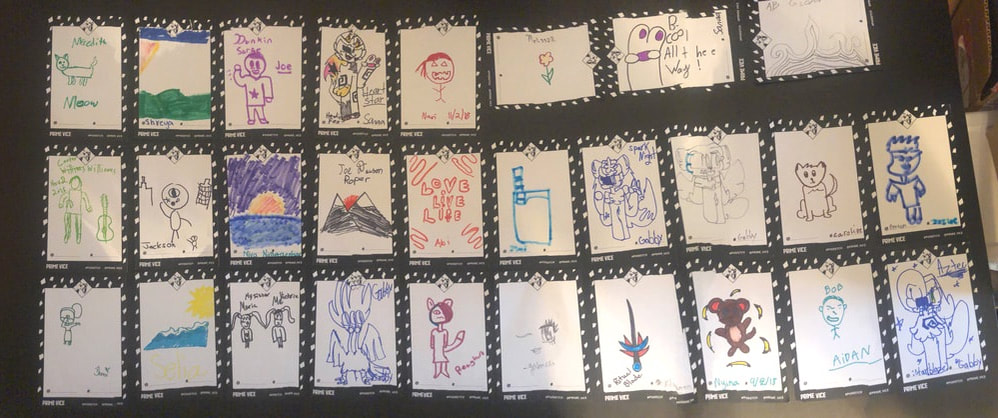
 RSS Feed
RSS Feed
